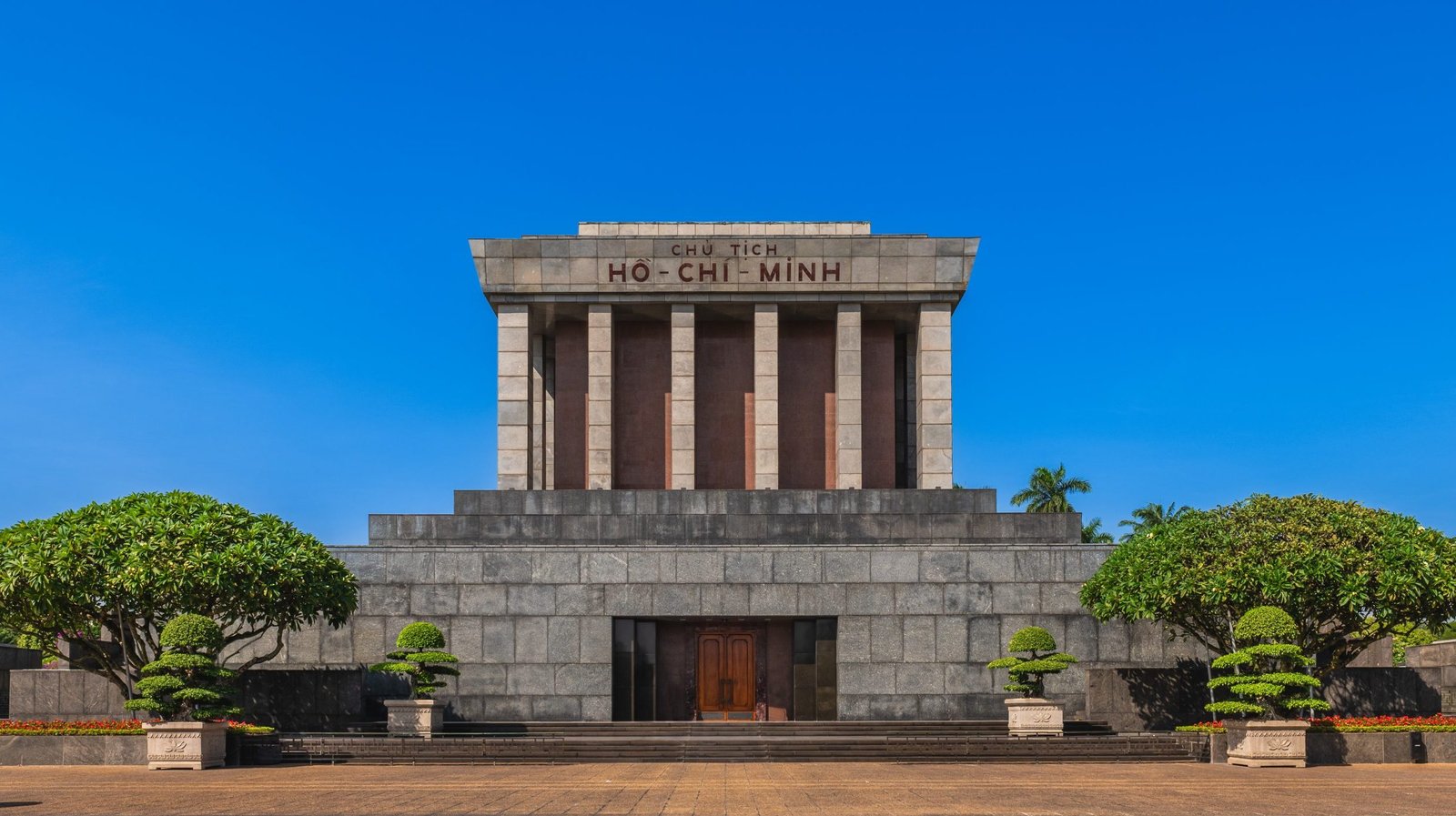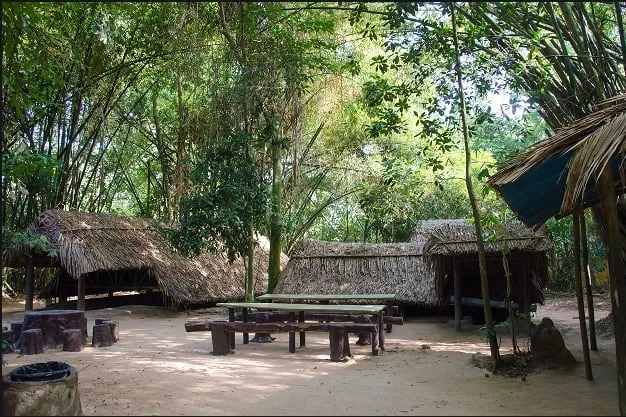Contents
ToggleThe Ho Chi Minh Mausoleum – A National Treasure
Standing proudly in Ba Dinh Square, just a short 12-minute ride from Hanoi’s bustling Old Quarter, the Ho Chi Minh Mausoleum is one of Vietnam’s most revered landmarks and a symbol of national pride. Construction began in 1973 and was completed in 1975, using materials sourced from across the country—granite from Thanh Hoa, wood from the Central Highlands, and marble from Nghe An, Ho Chi Minh’s birthplace. The structure itself was inspired by Lenin’s Mausoleum in Moscow but built with a distinctly Vietnamese spirit, blending monumental architecture with symbolic details.
Inside the mausoleum lies the embalmed body of President Ho Chi Minh, preserved in a glass case. Every year, millions of Vietnamese and international visitors quietly line up to pay their respects to “Uncle Ho,” the revolutionary leader who guided Vietnam’s path to independence. The atmosphere is solemn and deeply moving, with soldiers in immaculate white uniforms guarding the entrance and maintaining order.
The location of the mausoleum is also historically significant. Ba Dinh Square is the very place where, on September 2, 1945, Ho Chi Minh stood before a crowd of thousands and proclaimed the Declaration of Independence of the Democratic Republic of Vietnam, marking the birth of modern Vietnam. To stand here today is to stand where history changed forever.
Beyond being just a monument, the mausoleum is considered a sacred site, where respect, memory, and national identity converge. For many Vietnamese, a visit here is not just sightseeing—it’s a pilgrimage, a chance to honor the “Father of the Nation.”

How to Get There
📍 Address: 2 Hùng Vương Street, Ba Đình District, Hanoi
The Ho Chi Minh Mausoleum sits right in the heart of Ba Đình Square, about 3 km from Hanoi’s Old Quarter. It’s easily accessible by public transport, taxi, or even on foot if you enjoy walking through the city’s lively streets.
- By Bus: The cheapest way to reach the mausoleum is by taking Bus Line 09 from Hoàn Kiếm Lake. The ride costs only 7,000 VND (less than $0.30) and takes about 15–20 minutes, depending on traffic. Buses stop directly near Ba Đình Square, making it a convenient budget-friendly option.
- By Taxi: For a more comfortable and direct journey, you can take a metered taxi from the Old Quarter, which usually costs around 70,000–100,000 VND ($3–4). Reliable companies include Mai Linh, Vinasun, and ABC—all known for their transparency and safety.
- By Ride-Hailing Apps: If you prefer modern convenience, Grab, Bee, and Xanh SM (Vietnam’s new green electric taxi service) are widely available in Hanoi. With a local SIM card or Wi-Fi access, you can easily book a car or motorbike ride directly to the mausoleum. Prices are typically cheaper than traditional taxis.
- On Foot or by Bicycle: Adventurous travelers may also choose to walk or cycle from the Old Quarter. It’s a pleasant 30–40 minute stroll that takes you past the leafy boulevards, French colonial villas, and government buildings of Hanoi’s political center. Cycling is also a great way to explore the area, as many nearby attractions are clustered together.
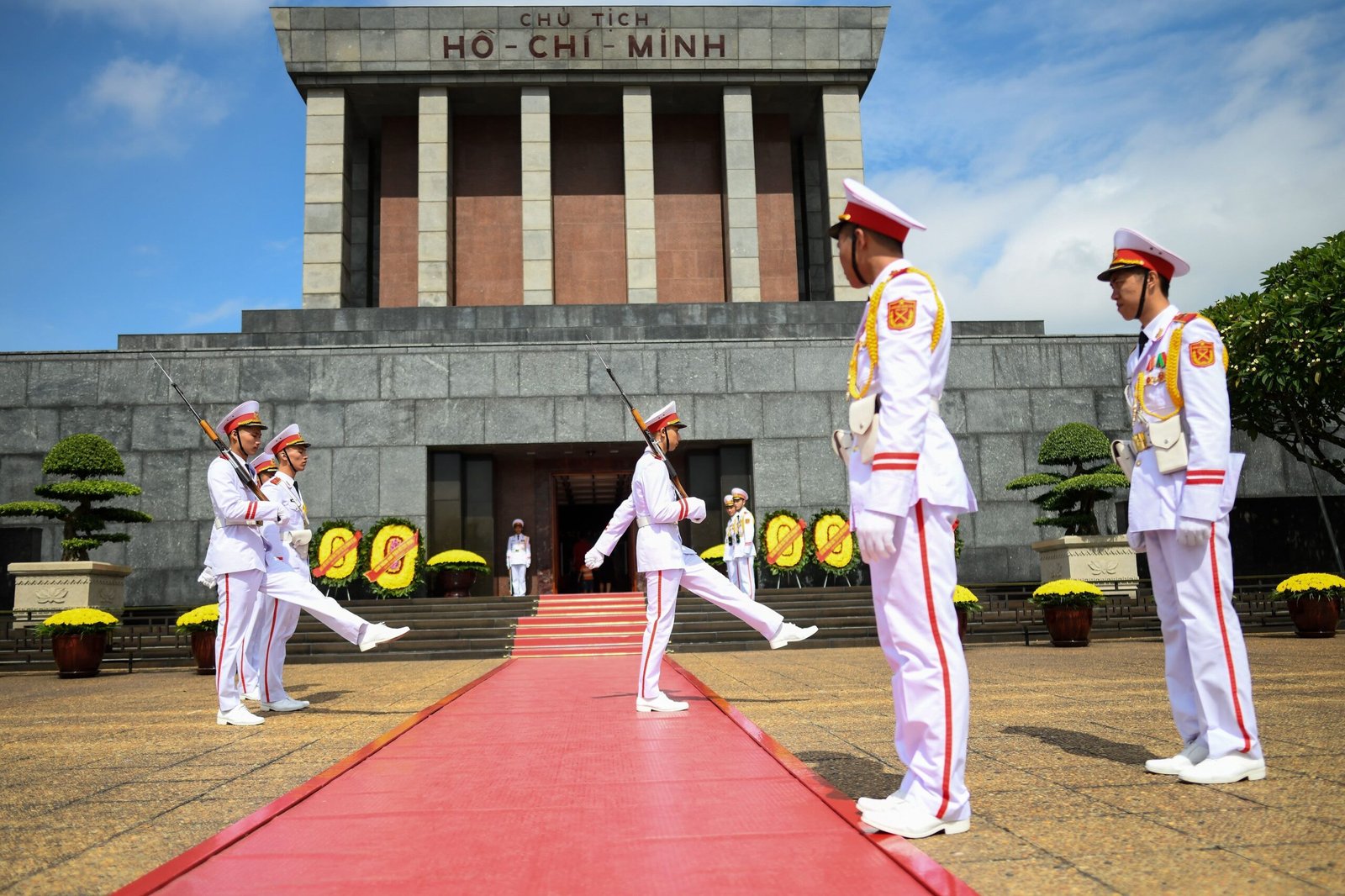
Tickets & Opening Hours
Visiting the Ho Chi Minh Mausoleum is very affordable—and for Vietnamese citizens, it’s even free.
- Vietnamese visitors: Free of charge
- Foreign visitors: 25,000 VND (just over $1)
🕒 Opening hours:
- Morning only: 7:30 AM – 10:30 AM
- Closed on Mondays and Fridays
- Annual maintenance: The mausoleum is closed for preservation work from June 15 to August 15 each year, when Ho Chi Minh’s body is sent abroad for re-embalming.
✅ On special national occasions, such as Ho Chi Minh’s birthday (May 19), Vietnam’s National Day (September 2), and Tết (Lunar New Year), the mausoleum remains open to the public—even if these dates fall on a Monday or Friday.
👉 Travel tip: The mausoleum is one of Hanoi’s most visited attractions, so it’s best to arrive early in the morning before opening time to avoid long queues. Security checks are strict, and lines can stretch across Ba Đình Square, especially during weekends or national holidays.
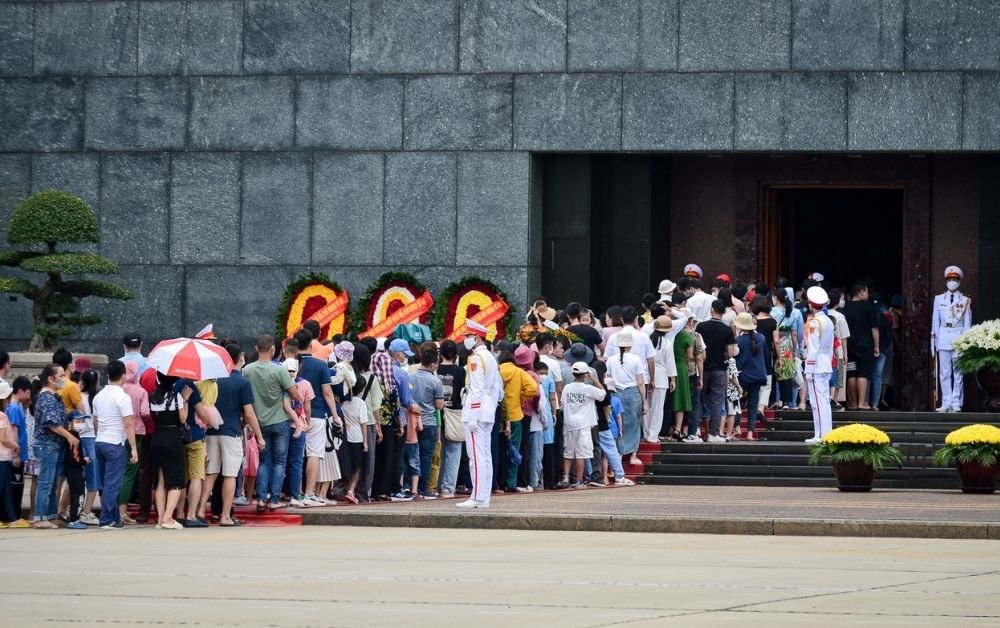
What to See in the Ho Chi Minh Mausoleum Complex
A visit to the Ho Chi Minh Mausoleum is more than just a stop at one building—it’s a journey through Vietnam’s history and national pride. The complex is vast, with monuments, gardens, and museums that together reflect the life and legacy of “Uncle Ho.” Visitors usually follow a set walking route that takes them through the highlights:
- The Mausoleum
At the heart of the square stands the imposing granite mausoleum, a solemn structure rising 21.6 meters high and designed with inspiration from Lenin’s Mausoleum in Moscow. Inside, the preserved body of Ho Chi Minh rests in a glass sarcophagus, guarded by soldiers in immaculate white uniforms. The atmosphere is hushed and reverent—photography is strictly forbidden, and visitors are expected to move in silence.
- Ho Chi Minh’s Stilt House
Just a short walk away is the humble stilt house where Ho Chi Minh lived and worked from 1958 to 1969. Built in the style of the Tay–Thai ethnic minority, the two-room wooden house reflects his simple lifestyle. Visitors can peek inside to see his work desk, typewriter, and bookshelf—reminders of a leader who chose modest living over luxury, despite being head of state.
- The Fish Pond
Surrounding the stilt house is a lush garden with a large fish pond, where Ho Chi Minh often spent his evenings feeding the carp. This tranquil spot gives travelers a glimpse of his personal side, far removed from politics and ceremony. Today, it remains one of the most peaceful corners of the complex.
- One Pillar Pagoda
Dating back to 1049, this iconic Buddhist temple stands on a single stone pillar, shaped to resemble a lotus rising from the water—a symbol of purity. Though small in size, the One Pillar Pagoda is one of Vietnam’s most famous religious landmarks and has been recognized as one of Asia’s most unique temples. It’s a popular stop for both pilgrims and tourists seeking blessings for health and happiness.
- Ho Chi Minh Museum
To better understand the man behind the revolution, the Ho Chi Minh Museum is an essential stop. Open from Tuesday to Sunday with a modest entry fee of 40,000 VND, the museum showcases his life and Vietnam’s fight for independence through photographs, personal belongings, documents, and creative installations. Exhibits also place Vietnam’s struggle in a global context, making it both educational and thought-provoking.
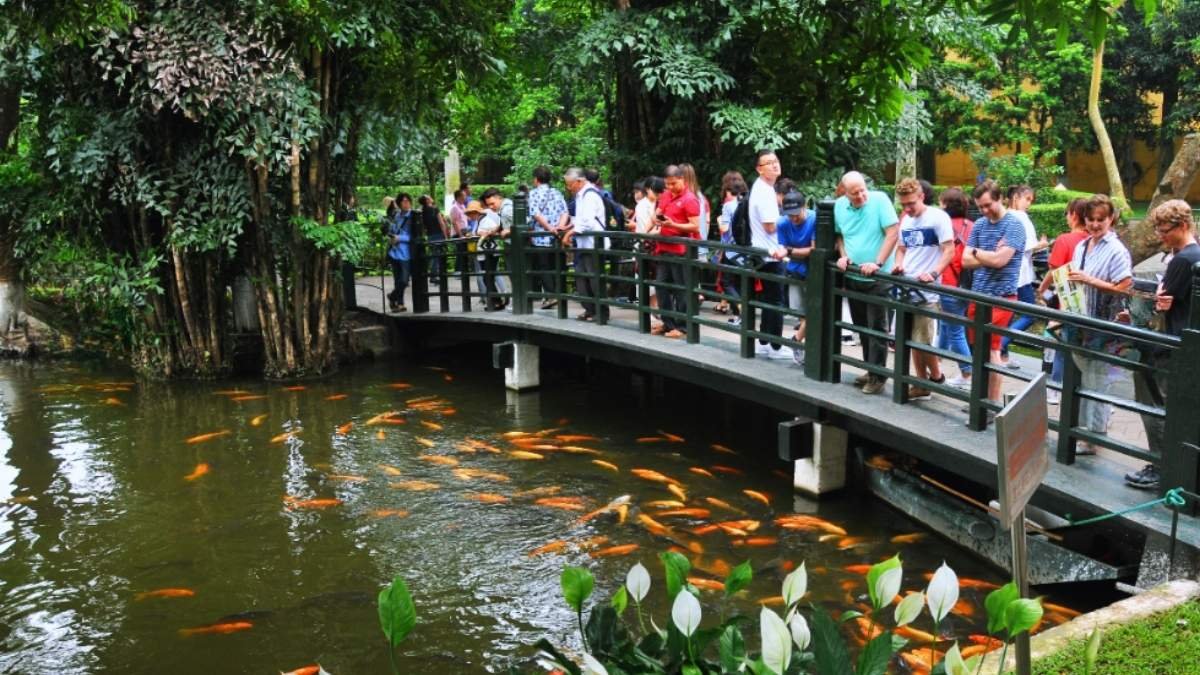
Practical Tips for Visitors
Visiting the Ho Chi Minh Mausoleum is not just sightseeing—it’s considered a solemn, patriotic act for many Vietnamese. To make your visit smooth and respectful, here are some important tips:
- Dress Modestly 👕
Both men and women should avoid shorts, miniskirts, and sleeveless tops. Light, long clothing is recommended—especially since mornings in Hanoi can be cool.
- Children Restrictions 👶
Children under 2 years old are not allowed inside the mausoleum for safety and preservation reasons. Families with young kids can still enjoy the gardens and surrounding attractions.
- Security Rules 🎒
Bags, cameras, food, and drinks are not permitted inside. You’ll need to leave these items at the deposit counters before entering. Phones must be switched to silent mode, and photography is strictly prohibited in the mausoleum.
- Silence & Behavior 🤫
Visitors are expected to remain silent and walk in orderly lines. The atmosphere is one of respect—think of it as entering a sacred place rather than a tourist attraction.
- Follow Soldier Instructions 🎖️
Guards in white uniforms are stationed throughout the complex. They are not just ceremonial; they also ensure security and protocol. Always follow their directions.
- Remove Hats 🎩
Men should remove hats before entering the mausoleum as a gesture of respect.
- Timing Matters ⏰
The mausoleum gets crowded, especially on weekends and national holidays. Arriving early (before 7:30 AM) ensures shorter queues and a cooler wait under Hanoi’s sun.
- Best Days to Visit 🌿
Avoid Mondays and Fridays when the mausoleum is closed. If you visit during the annual maintenance period (June 15 – August 15), you’ll still be able to explore the complex, but the mausoleum itself will not be open.
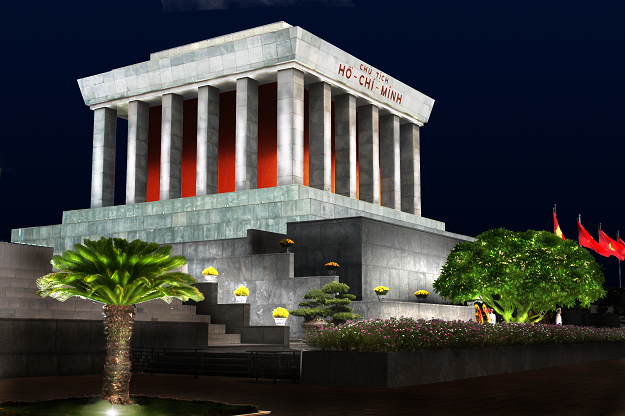
Final Thoughts
The Ho Chi Minh Mausoleum is more than a landmark—it’s a place of deep respect, national pride, and historical memory. A visit here gives you a meaningful glimpse into Vietnam’s past and the enduring legacy of its greatest leader.
Whether you’re a history lover, a cultural explorer, or simply curious, this is a must-see attraction in Hanoi.












